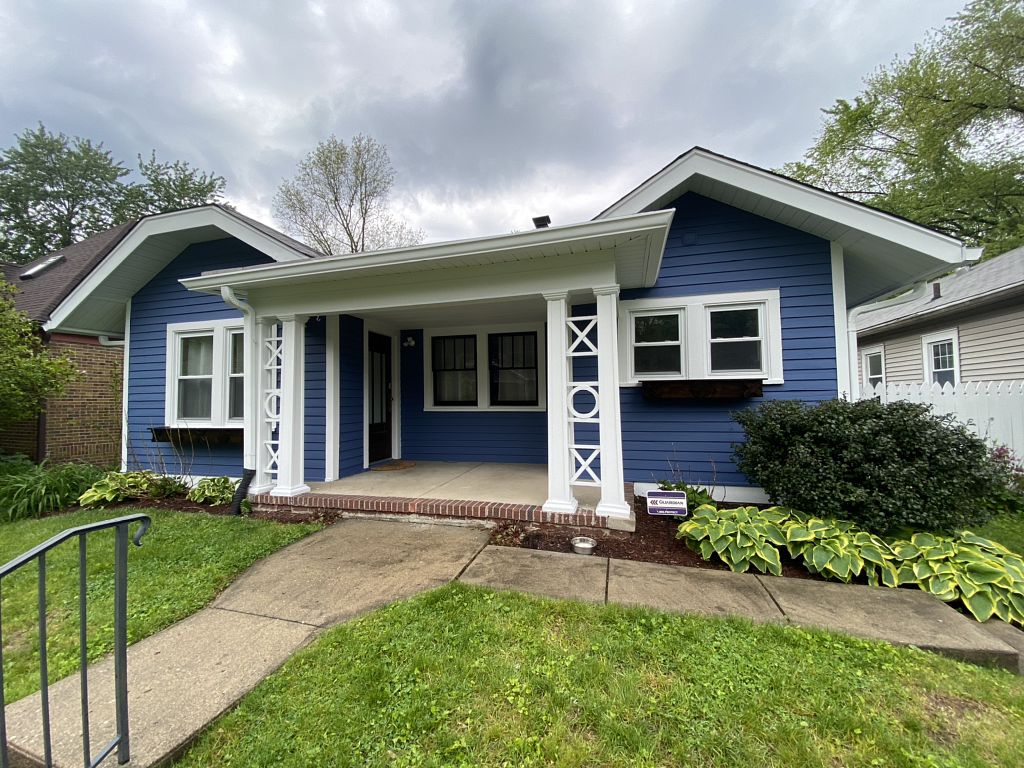Is there a season for painting exteriors? Depending on your region’s climate, there will be better times than others. Knowing when to paint the exterior of your house comes primarily down to temperature, humidity, rain, wind, and direct sun. Other contributing factors include surface type, surface preparation, paint choice, drying time and curing time. This post will explain some considerations to the timing of painting your home’s exterior.
Check Your Temperature
One of the most significant factors, and you’ll see this if you check the label of your exterior paint, is temperature. What temperature is too hot to paint outside, and what is too cold to paint outside? The best temperatures to paint the exterior of your house range generally from 60°F to 85°F. Some paints, like Sherwin-Williams Resilience with Moistureguard, are formulated to offer a little more flexibility and can be applied in temperatures as low as 35°F. Much of the Midwest has four distinct seasons, none of which are too extreme for too long compared to the desert Southwest or far northern states.
Why does temperature matter? It takes time for the ingredients in an exterior paint to fuse, or melt together. If your 50° daytime temperatures drop to mid-20s in the nighttime, you could have a problem. The paint is still drying and curing—meanwhile, the air is growing colder and cannot hold as much moisture. The released humidity (dew) can work its way into or under the surface of your paint. This action can result in cracking, peeling, or mildew.
Conversely, if your temps are 90°+, your paint may dry and cure too quickly, resulting in peeling or cracking. How hot is too hot? If you can put your hand on the exterior of your home and it’s too hot to leave it there for more than a few seconds, it’s likely too hot to paint. It shouldn’t be too windy for proper drying when you paint, and between 40% to 70% humidity is a good range.
The Enemies of the Exterior Painter
Set Your Calendar Accordingly
Indiana and adjoining states have three winter months, December through March, where average temperatures dip below 35°F. While not the ideal time to paint outside, it is a great time to get set to paint! The first order of business: get a painter on the books. As you can imagine, an in-demand professional painter has a calendar that fills up as the summer days get longer.
During this preparatory time, you can consult with your painting team regarding any prep work or carpentry necessary to get ready for painting. You can review and select paint colors. When the good weather comes, you’re at the front of the line!
It's Time to Paint - Some Tips
When the weather is cooler:
- Prep on the cooler days.
- Paint during the heat of the day on the best days.
- Choose your product wisely, selecting a paint with a shorter dry/cure time when appropriate.
When the weather is warmer:
- Start early and end early (before the intense heat of the late day).
- Paint in the shadows. Pay attention to the pattern of the sun and paint your exterior surfaces when they are out of direct sunlight and not hot to the touch.
- Get to know the paints you use and select appropriate blends for your climate.
Get it Right the First Time
Paint your outside surfaces when the weather permits. That’s a pretty easy rule-of-thumb. However, nuances requiring an expert exist, especially with the unpredictable nature of Indiana weather. It pays to take guesswork out of it by hiring a professional. Hiring a professional gives you the benefit of a knowledgeable consultant, work that comes with a warranty, quality products, and a high level of attention to detail and craftsmanship.
The bottom line is that it’s cold in the winter, warm in the summer. And, in Indiana, there’s a lot of in-between. It’s that in-between where an expert can come in handy—knowing what to use, when to use it, and how to get the best, long-lasting results for an exterior painting job, despite fluctuations of the weather.





